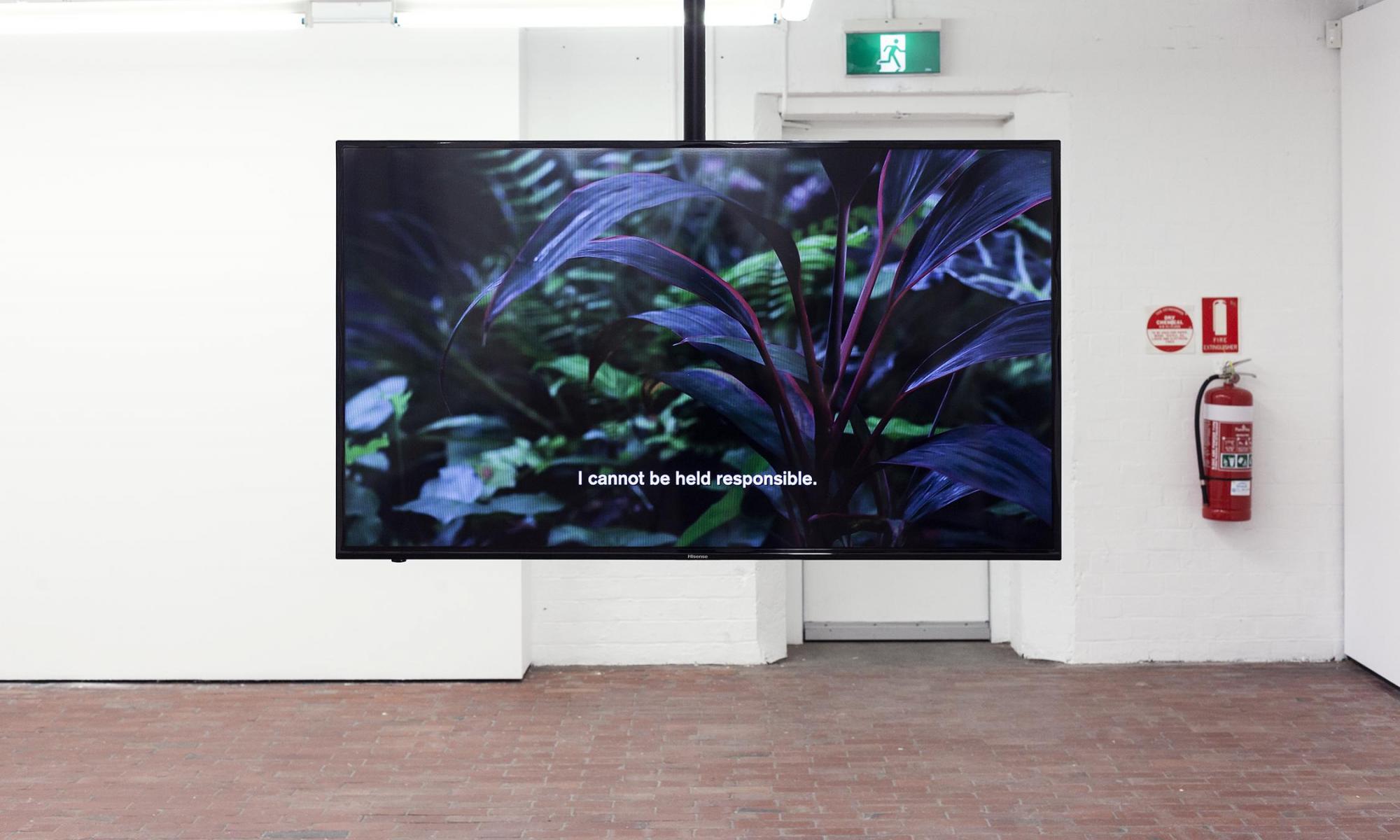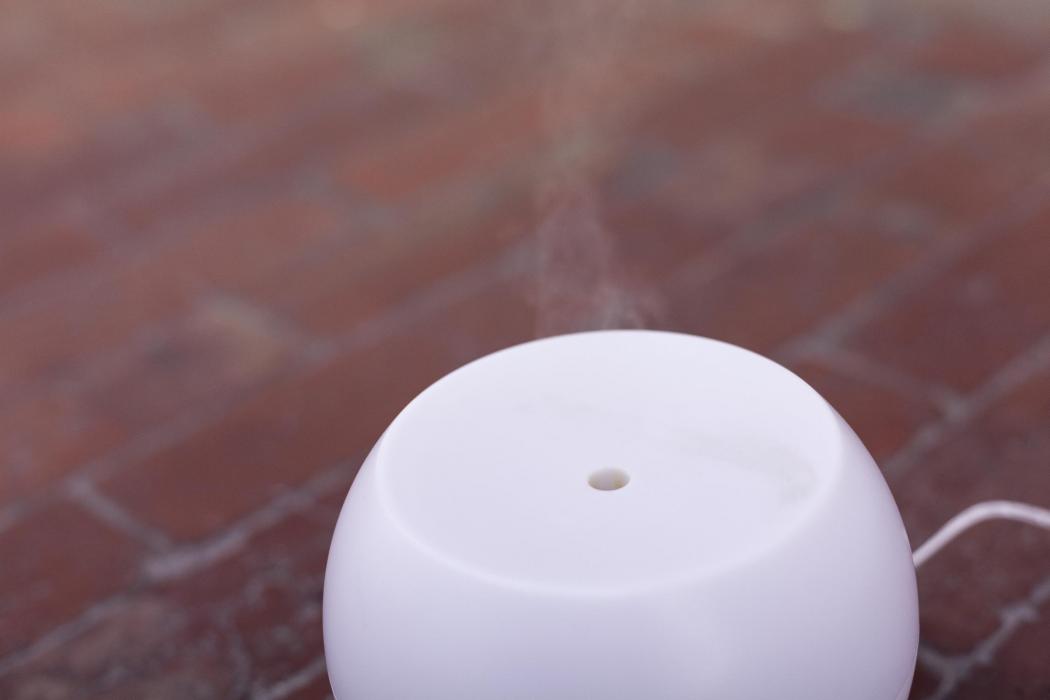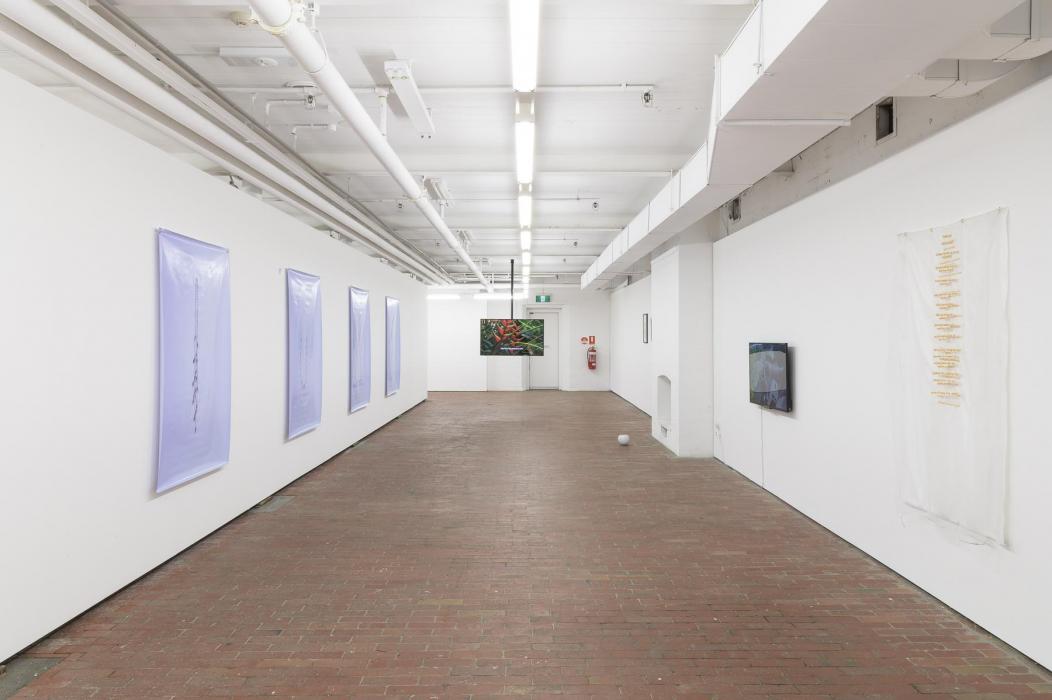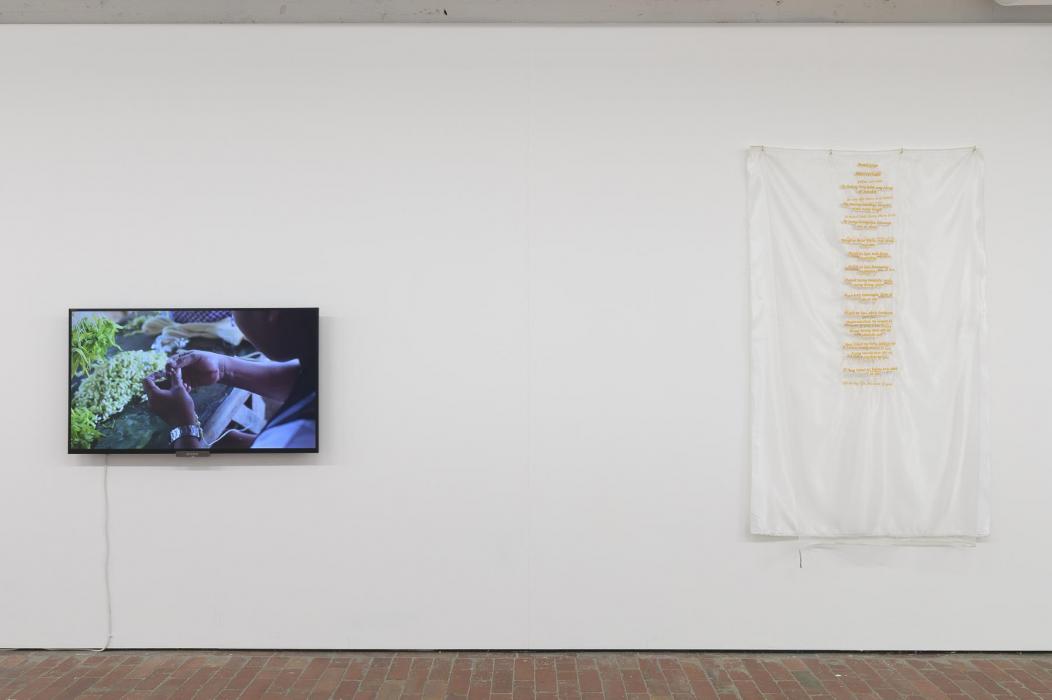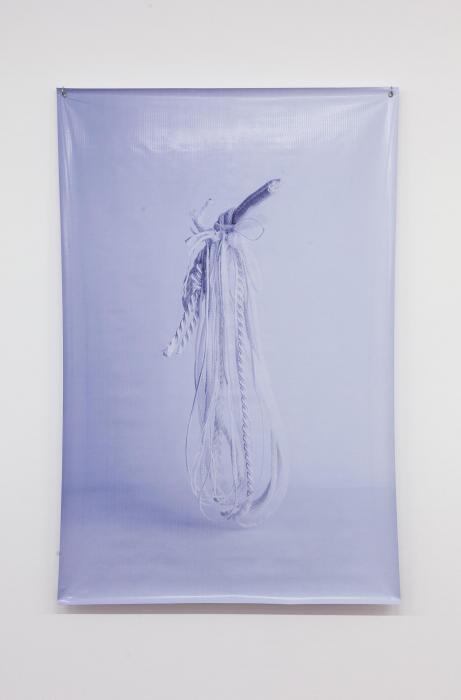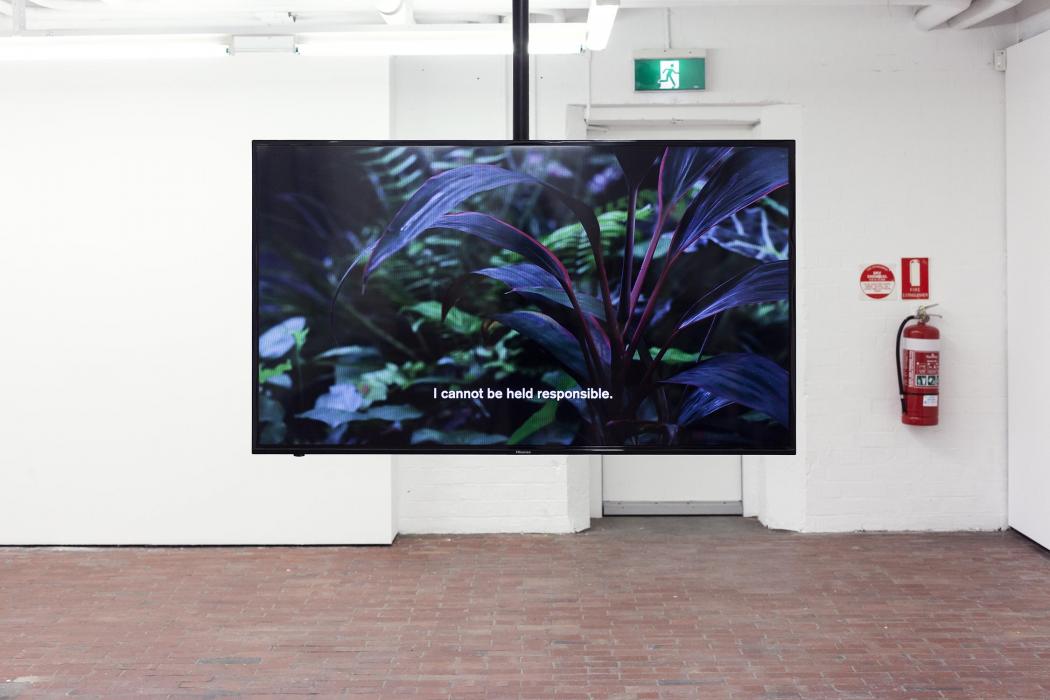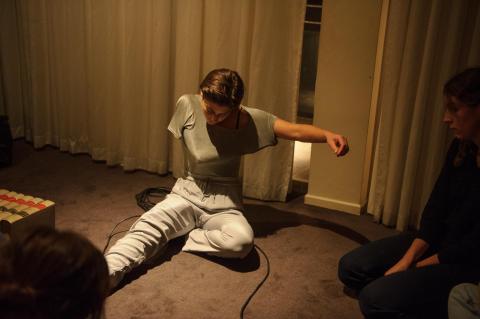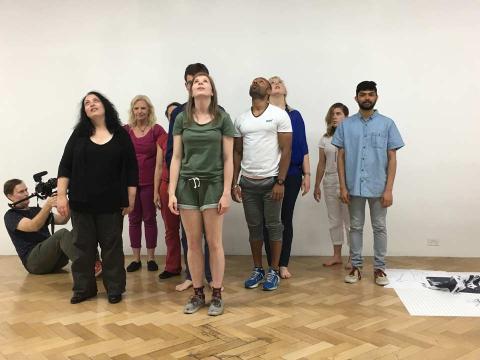Of sampaguita, ilang-ilang
‘You smell like your mum’s house,’ my friend says to me, holding me and inhaling deeply at my shoulder. ‘Like Bruce St. and coconut.’ This is an impossibility as it has been some years since my mum sold our family home in the North Western suburbs of a city called Melbourne, to downsize to an apartment across town, close to the Abbotsford Convent. The first thing I notice in the exhibition Of sampaguita, ilang-ilang is a steady plume of steam coming from a small mod-con placed on the brick floor. Humidifier (2019) diffuses jasmin and ilang-ilang (known in cosmetics as ylang ylang) with water into the air.
The exhibition brings together three artists; Lesley-Anne Cao (Philippines), MJ Flamiano (Australia) and Czar Kristoff (Philippines). Photographs, video, fabric works and screen prints have been prompted by the sampaguita. A Filipino name for the national flower, sampaguita is the common name of the species jasminum sambac, from the wide genus of jasmine. Jasmine garlands are often strung with ilang-ilang leaves and sold on the side of the road, in traffic, in front of churches. They are hung over rearview mirrors, altars and religious icons to denote purity. [1] Sampaguita flower production, garland making and marketing are traditional livelihood activities within and around Metro Manila as well as regionally in the Philippines. [2]
One region is Laguna, the home town of artist Czar Kristoff. Dise-syete Bente-tres: a Documentation of How Sampaguita Necklace is Assembled (2019) captures the profession of sampaguita arrangement in a single-channel video: I watch over the shoulder of Roan Casacop (30 years old) whose hands move in skilled repetition over a table. The filming has been sped up slightly in post-production, demonstrating the implausible rate at which she works, accompanied by constant sounds of speech, traffic and rooster calls.
While Kristoff documents sampaguita flower production, Lesley-Anne Cao uses mercantile logic to commission four reproductions of the garland; which become a photographic contribution to the exhibition. Dust (zinc alloy, plastic beads, sterling silver, PLA filament, thread, string, cord, rope) (2019) is the title of a series of four prints and also the list of materials from which each sampaguita sculpture is made. Exploring the variance of this national symbol, Cao asked a local silversmith in Quezon City (Metro Manila) to execute a sampaguita necklace from memory. In another iteration Cao collects string, rope and thread from local hardware and craft stores to make a garland of threads, a necklace of rope. I ask why the sampaguita in one image looks waxy, like a ghost under a sheet. Cao explains that a clump of sampaguita garlands were scanned and 3D printed as one form, as they are held together in groups until each one is disentangled and sold.
Roughly the scale of small commercial banners, the blue ink streaks from the industrial process of digitally printing onto polytarp (tarpaulin) gives these final images a melancholy aura, reminding me of the Victorian era daguerreotypes of human figures and corpses. Cao has previously printed photographs onto polytarp in Untitled (Book for weeds) (2018) and discusses the material’s ‘plastic resilience ubiquitous in billboards, store signages, election posters, [and] reused for such purposes as covers for tables and tricycles.’ [3] The Filipino artist’s use of polytarp is a provocation for a Western viewer, whose familiarity with this ‘everyday material’ would vary drastically to its flexible, ingenious uses in Metro Manila. Like the distance between a scent and what it provokes or conjures in the imagination or memory, Cao’s reproductions make palpable a gap in interpretation.
Like the bare neck of the gallery, a flat-screen monitor hangs above the paved brick floor from a ceiling mount playing MJ Flamiano’s work Anting-anting (oro, plata, mata) (2019). The title is a mix of Filipino and Spanish words. ‘Anting-anting’ refers to objects or charms worn for protection or other powers (that can take on different forms), found in pre-Spanish religions in The Philippines. This looped, silent video depicts close up views of different tropical plants, the camera moving slowly across the surface of individual leaves. A wider view reveals these plants are housed in the Royal Botanic Gardens’ Tropical Glasshouse in South Yarra. Flamiano conjures other species in place of the sampaguita flower within Australia and her attempt to transmogrify across geographic borders is a kind of magic.
What does the effect of this magic have on an audience that doesn’t understand it? Is its presence still tangible? In Anting-anting (oro, plata, mata) (2019) white subtitles appear on screen; English language layers atop of images of the glasshouse’s gridded roof. How does this fit my body? // Does it lay flat against my skin, or stick to my sweat?
The works in Of sampaguita, ilang-ilang engage with the different modes of farming, production, dissemination and adornment of a national symbol. The artists examine the symbol according to their varied interests, mediums and processes, and in doing so evoke untranslatable associations and ideas in an Australian viewer. These recreations are visually diffuse, permeating the gallery space as something other than they are.
[1] Sampaguita was one of the national symbols declared during the Commonwealth era (American Occupation) in the Philippines. – Czar Kristoff, 2019.
[2] ‘The raw materials are imported from Bulacan, Pampanga and nearby regions. San Pedro used to be the Sampaguita capital but the government did not protect the farms and the land owners sold to developers who made villages. The [workers] assemble the necklaces in Laguna and sell to the capital. They make at least 10K necklaces per day and only get 20% of the sales – they earn at least PHP300 per day [in 2019, this is about AUD 7.9)’ - Field interview with Marefe, who manages one of the sampaguita production co-operatives, Czar Kristoff, 2019.
[ 3] Lesley-Anne Cao, Untitled (Book for weeds), Accessed on 10th March, 2019, https://lesleyannecao.site/Untitled-Book-for-weeds.

